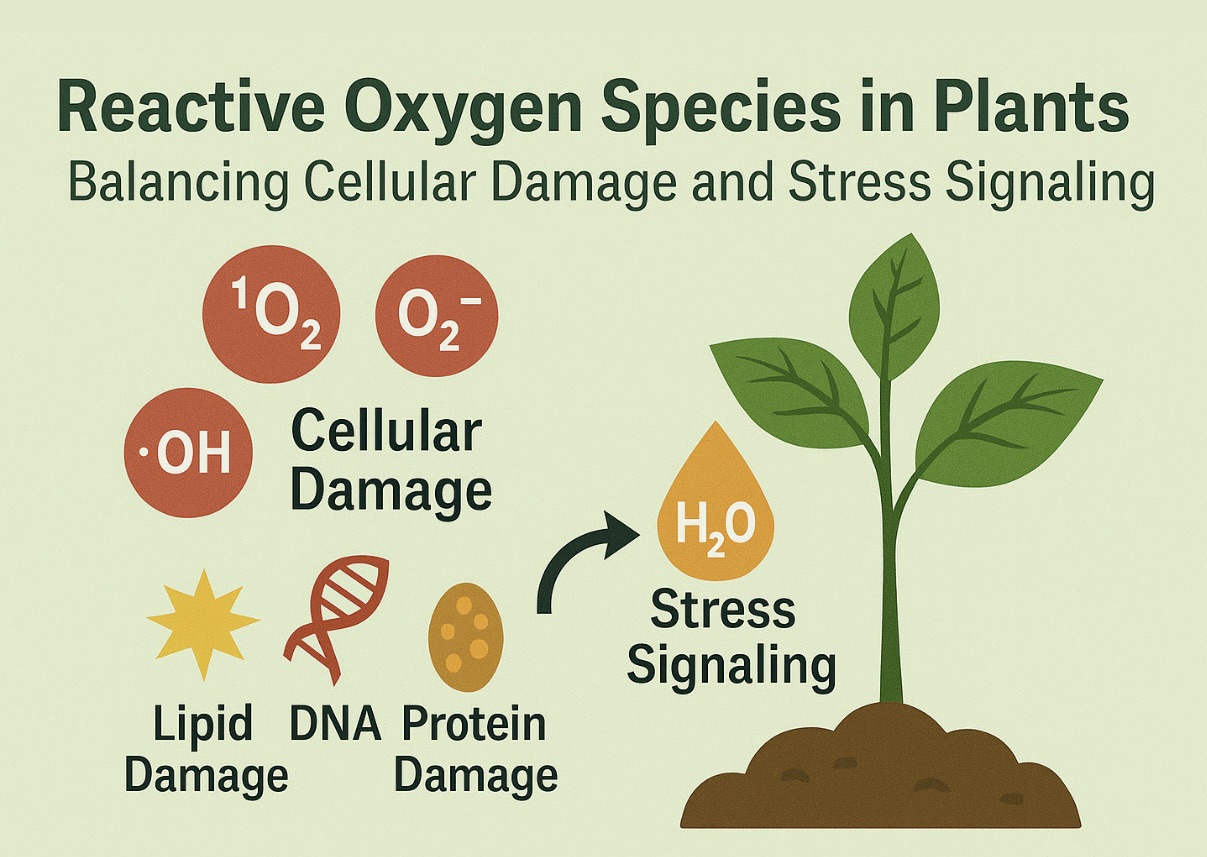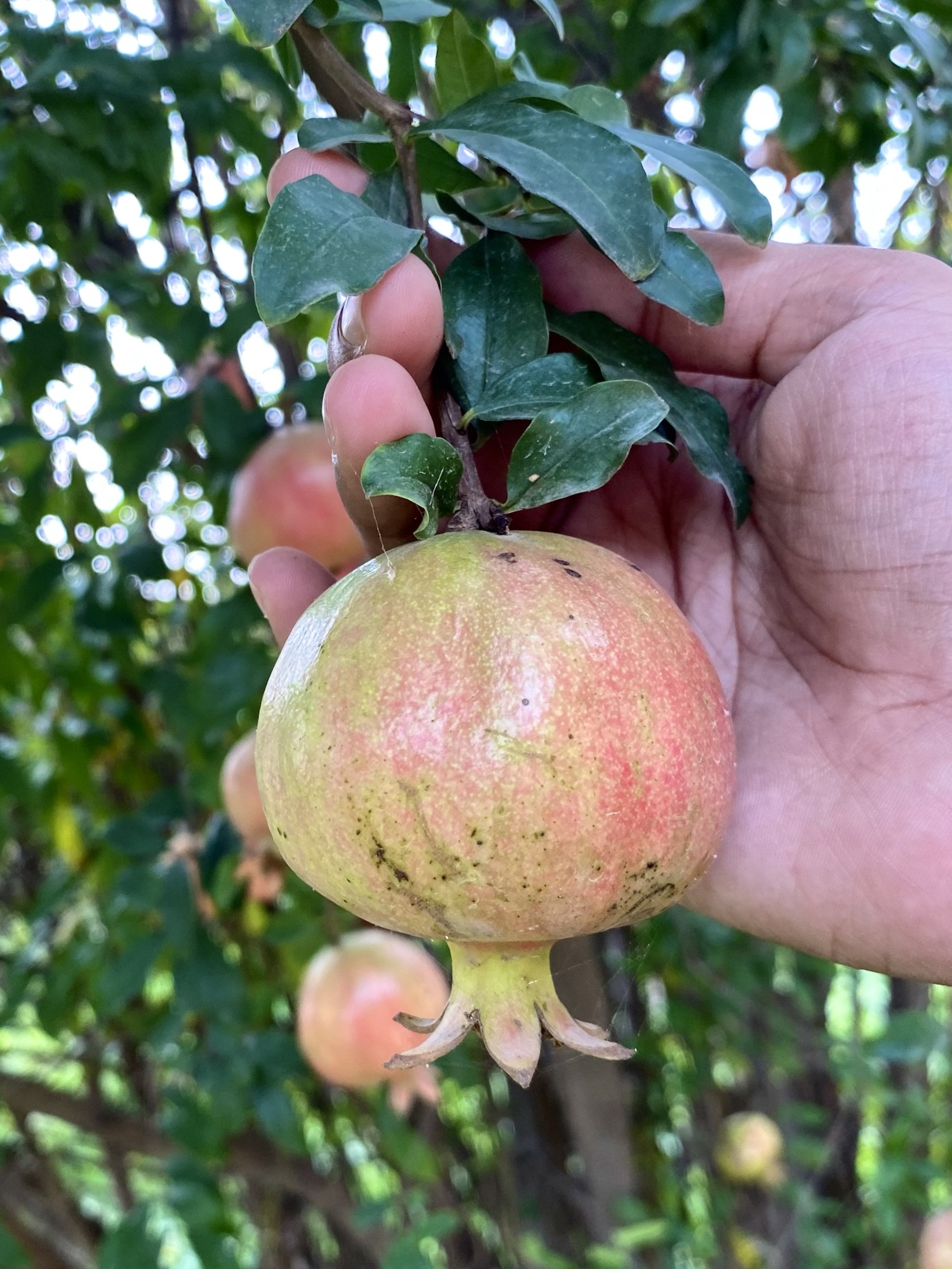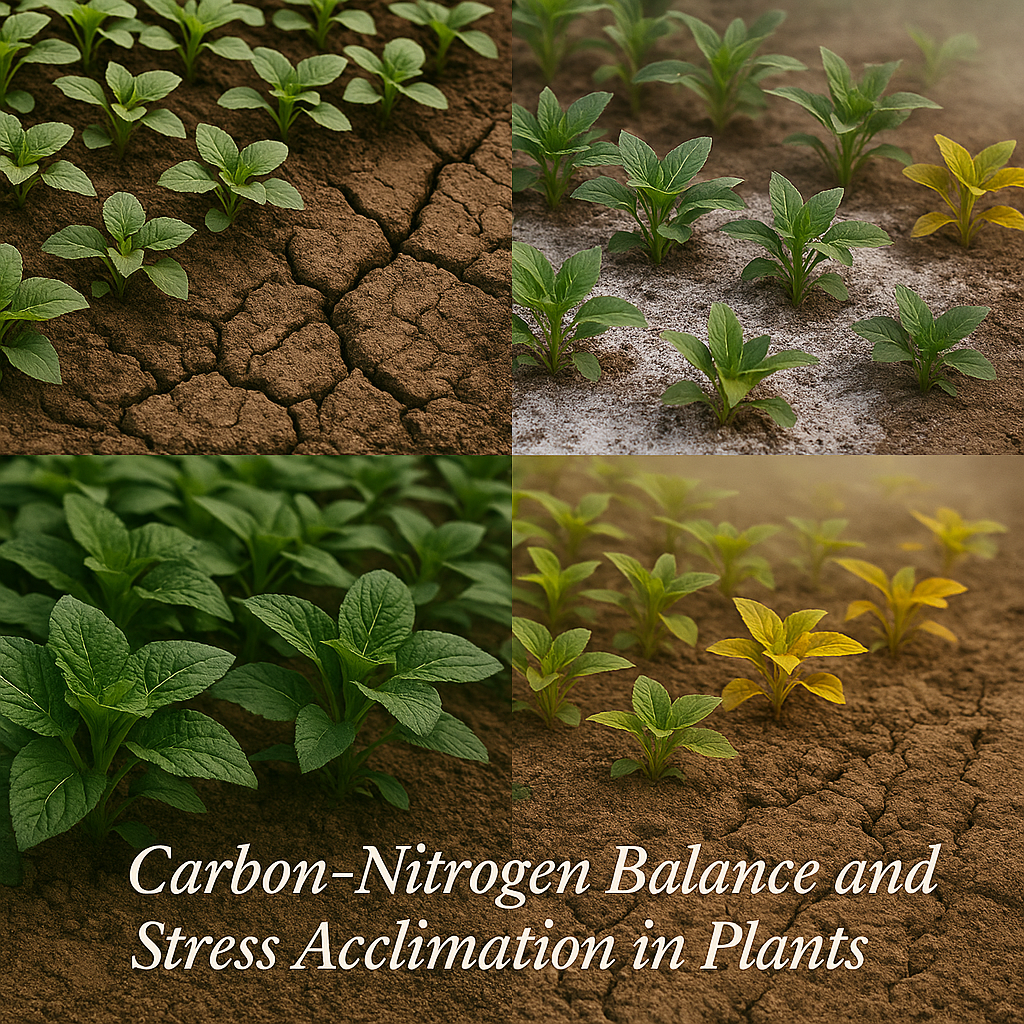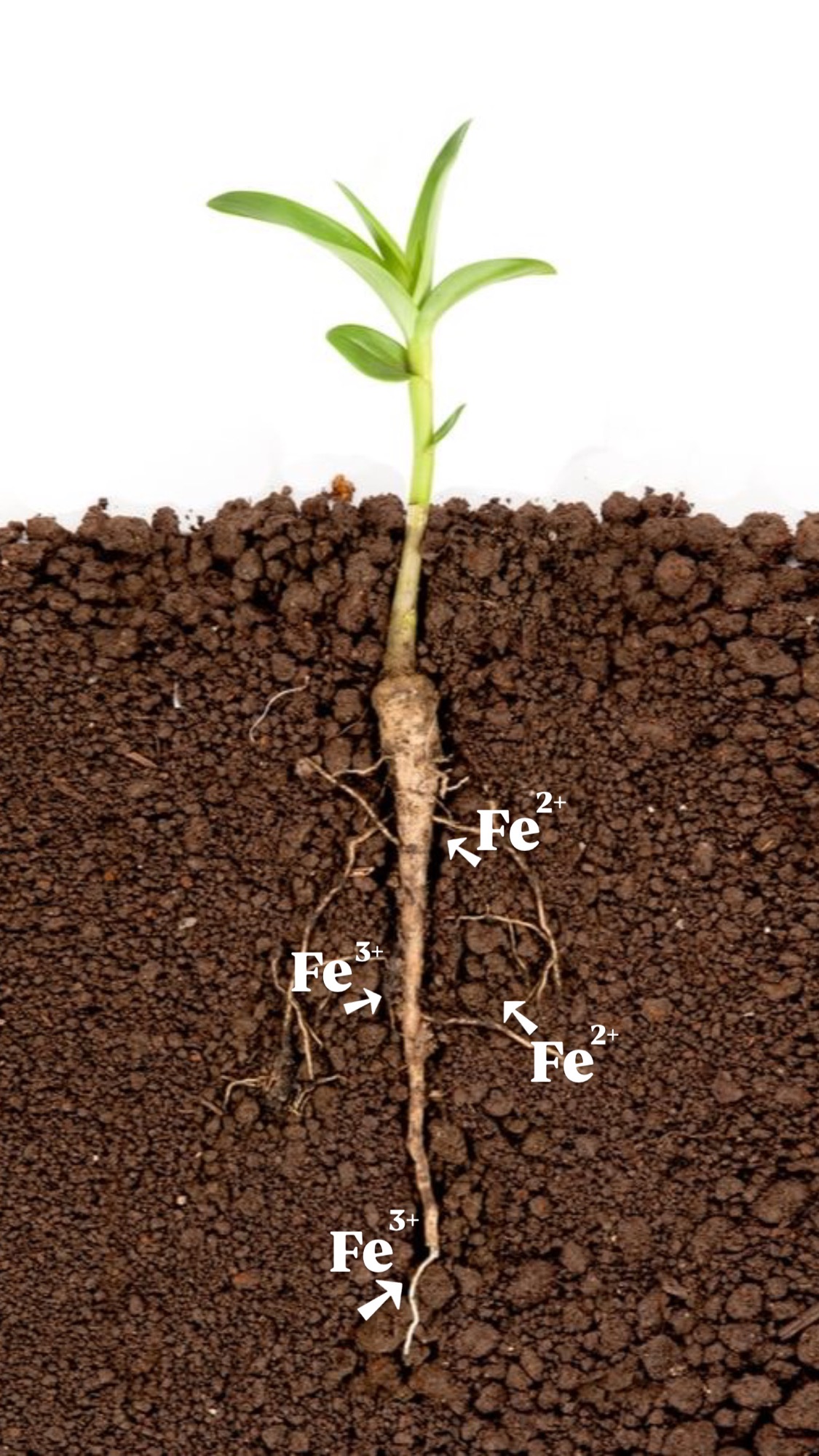Plants live in a world of constant environmental uncertainty. Plants face various challenges such as the sweltering heat of a summer drought and the chilling grip of frost. Salinity creeping through irrigation water also poses a threat. Additionally, pathogens and pests continue to put plants under siege. To navigate these challenges, they rely on a vast network of signaling molecules. Among these, reactive oxygen species (ROS) stand as both allies and adversaries.
Historically viewed through a destructive lens, ROS were once considered merely toxic byproducts of aerobic metabolism. The damage they inflict on DNA, lipids, proteins, and membranes earned them the reputation of cellular villains. However, this view has been dramatically reshaped over the past two decades. Modern research reveals that ROS are not just agents of chaos. They play a central role in signaling processes that govern plant growth, development, and stress responses.
This dual nature of ROS—harmful when in excess, essential when regulated—places them at the heart of plant adaptability. In this article, we unravel the complex roles of ROS in plants. We explore how they are generated and managed. We also examine the implications of their regulation for plant stress tolerance and crop resilience.
Origins of ROS in the Plant Cell
ROS are chemically reactive molecules that include singlet oxygen, superoxide anions, hydrogen peroxide, and hydroxyl radicals. In the plant cell, their generation is an unavoidable consequence of various metabolic processes. The primary sites for ROS production include chloroplasts, mitochondria, peroxisomes, and plasma membranes.
In chloroplasts, particularly during photosynthesis, photosystems can become overexcited under high light intensity. This overexcitation leads to the formation of singlet oxygen and superoxide anions. Mitochondria contribute to ROS formation through the respiratory electron transport chain. They especially do this when the electron flow is disturbed under stress conditions. Peroxisomes play their part during photorespiration and fatty acid metabolism, generating hydrogen peroxide as a byproduct. Finally, the plasma membrane houses NADPH oxidases. These enzymes actively produce ROS during pathogen attack. They also respond to other stress signals.
The continuous generation of ROS, even under non-stressful conditions, implies that plants have evolved mechanisms to handle their presence. It is only when this production exceeds the detoxification capacity that ROS become toxic and disrupt cellular homeostasis.
When ROS Turn Destructive
An overaccumulation of ROS leads to what is known as oxidative stress. This occurs when the balance between ROS generation and the plant’s antioxidant defenses is lost. Oxidative stress damages almost every component of the cell. Lipids in cellular membranes undergo peroxidation, which compromises membrane integrity and causes ion leakage. Proteins suffer from oxidation, leading to altered structure and function. DNA, being particularly sensitive, faces strand breaks and mutations that threaten genetic stability.
The visible signs of oxidative damage often manifest as chlorosis, necrosis, wilting, and stunted growth. Yield losses in crops under such stress are well-documented, particularly during prolonged exposure to high temperatures, drought, or salinity. The inability to control ROS can trigger programmed cell death in certain tissues. This serves as a last-resort mechanism. While it is protective in moderation, it can be detrimental when widespread.
Despite this destructive potential, the story of ROS in plants does not end here. Paradoxically, these same molecules that wreak havoc under certain conditions are also indispensable for orchestrating a plant’s response to stress.
ROS as Essential Messengers
The damaging effects of ROS are undeniable. Yet, what sets them apart from other metabolic byproducts is their role in cell signaling. In fact, at controlled levels, ROS function as versatile second messengers in numerous physiological processes. They influence everything from seed germination and root development to stomatal closure and pathogen defense.
Hydrogen peroxide, due to its relative stability and ability to diffuse through membranes, emerges as a key signaling molecule. It interacts with specific proteins and transcription factors, initiating signaling cascades that modulate gene expression. For example, during water deficit conditions, hydrogen peroxide mediates the action of abscisic acid. This mediation leads to the closure of stomata and conservation of water. Similarly, ROS levels fluctuate during root hair formation and pollen tube growth, where they guide cellular expansion and directional development.
These signaling roles are not random but highly coordinated. The location, concentration, and timing of ROS production determine whether they act as signals or stressors. It is this tightly regulated behavior that enables ROS to mediate beneficial outcomes under otherwise challenging conditions.
Tuning the ROS Machinery: Antioxidant Defense Systems
To harness the signaling potential of ROS while minimizing their toxicity, plants employ a finely balanced antioxidant defense system. This system comprises both enzymatic and non-enzymatic components that work together to detoxify excess ROS and restore cellular equilibrium.
Among the key players are enzymes like superoxide dismutase. This enzyme converts superoxide radicals into hydrogen peroxide. Catalase is another enzyme which breaks hydrogen peroxide into water and oxygen. Other enzymes include ascorbate peroxidase and glutathione reductase. They are part of the ascorbate-glutathione cycle. This is a crucial pathway in maintaining redox homeostasis.
Non-enzymatic antioxidants also play vital roles. Molecules like ascorbic acid (vitamin C), glutathione, carotenoids, and flavonoids act as scavengers, neutralizing ROS and preventing cellular damage. Together, these antioxidant systems ensure that ROS levels are maintained within a range that supports signaling without veering into toxicity.
The efficiency of these systems often determines a plant’s tolerance to environmental stresses. Genotypes with robust antioxidant capacity tend to withstand adverse conditions better, making antioxidant potential a valuable trait in crop breeding.
The Stress Connection: ROS in Abiotic and Biotic Responses
ROS are involved in nearly every stress response a plant encounters. During drought, stomatal closure limits CO₂ and impairs photosynthesis. This leads to excess light energy. It also results in ROS generation in chloroplasts. However, this ROS burst also activates genes associated with protective proteins, osmolyte accumulation, and stress hormones like abscisic acid.
In saline environments, ROS levels rise due to ionic imbalances and osmotic stress. Here too, controlled ROS production helps initiate salt tolerance pathways. Studies in halophytic species show a better coordination between ROS production and scavenging. This coordination allows these plants to survive in saline soils where others perish.
High temperatures increase membrane fluidity and denature proteins, triggering mitochondrial dysfunction and an increase in ROS. Similarly, under cold stress, reduced metabolic activity leads to ROS accumulation. In both cases, ROS serve a dual purpose. They trigger damage in unprepared cells. Additionally, they activate cold or heat-responsive gene networks that facilitate acclimation.
ROS also play a crucial role in plant defense against pathogens. When a plant detects the presence of a pathogen, it starts an oxidative burst. This burst involves a rapid production of ROS at the site of infection. This burst serves multiple functions. It acts as a direct antimicrobial agent. It damages the invading organism’s cellular components. It reinforces plant cell walls through oxidative cross-linking. It also initiates local cell death (the hypersensitive response), isolating the pathogen and preventing its spread. Moreover, this ROS wave can travel systemically, preparing distant tissues for potential attack—a phenomenon known as systemic acquired resistance.
Yet, not all outcomes are beneficial. Certain pathogens exploit ROS-mediated cell death to advance their invasion. Thus, the plant must strike a careful balance between activating defense and avoiding self-damage.
Interactions with Hormones and Developmental Pathways
ROS do not operate in isolation. Their signaling functions are closely intertwined with hormonal pathways. Abscisic acid, salicylic acid, jasmonic acid, ethylene, and auxins all engage in cross-talk with ROS to modulate plant responses.
During seed germination, for instance, ROS interact with gibberellins to break seed dormancy. In root development, ROS gradients influence auxin distribution, affecting root patterning and elongation. During senescence, ethylene levels rise, leading to increased ROS production that promotes the expression of senescence-related genes.
This integration with hormonal signaling makes ROS indispensable during stress. ROS is also crucial in shaping the life cycle of a plant.
ROS-Induced Cell Death: The Line Between Life and Death
One of the most dramatic outcomes of ROS signaling is programmed cell death (PCD). Unlike necrosis, which is uncontrolled and damaging, PCD is a highly regulated process that serves beneficial purposes. It plays a role in xylem development, petal and leaf abscission, and the hypersensitive response during pathogen attack.
The decision to undergo PCD depends on the intensity and localization of ROS production. When ROS cross a certain threshold, they initiate a cascade of events. This happens especially in combination with other signals like calcium ions and specific transcription factors. These events lead to DNA fragmentation, chromatin condensation, and cell dismantling. This sacrificial mechanism allows plants to remove compromised cells and protect the organism as a whole.
However, if PCD is triggered excessively or prematurely due to uncontrolled ROS accumulation, this can lead to widespread tissue damage. Severe yield loss can also occur.
Memory and Priming: ROS in Stress Adaptation
Plants lack a nervous system. However, they are capable of memory. This memory is a form of physiological priming. It enables faster and stronger responses upon repeated stress exposure. ROS play a central role in this stress memory.
Low levels of ROS during a mild stress event can prime antioxidant systems. They also activate stress-responsive genes. This process makes the plant better prepared for subsequent challenges. This priming effect is increasingly seen as a potential tool for crop improvement. Researchers expose plants to sub-lethal stress or apply ROS-generating compounds in controlled doses. Through these methods, they can induce a more resilient phenotype without genetic modification.
Epigenetic modifications also appear to be involved in ROS-induced memory. Changes in DNA methylation and histone modifications after ROS signaling can cause long-lasting changes in gene expression. In some cases, this passes the benefits of priming to future generations.
Agricultural Applications and Crop Improvement
The complex role of ROS presents both challenges and opportunities in agriculture. Excessive ROS can lead to crop failure when plants are under stress. However, targeted manipulation of ROS pathways offers a promising strategy. This approach can help in developing resilient plants.
Conventional breeding approaches now consider antioxidant enzyme activity as a trait for selection. Biotechnological interventions, including transgenic overexpression of ROS-scavenging genes and CRISPR-based editing of ROS-regulating enzymes, are actively being explored.
Foliar applications of ROS-modulating agents, antioxidant-rich formulations, and controlled oxidative priming treatments are already being tested in various crop systems. These techniques aim to harness the beneficial side of ROS while minimizing their detrimental effects.
The key lies in achieving a precise control over ROS levels. It should be enough to signal defense and adaptation. However, it should not be so much as to tip the balance toward damage.
Conclusion
Reactive oxygen species embody one of the most fascinating dualities in plant biology. They are at once destructive and indispensable. Without ROS, plants would be defenseless against many of the threats they face. Yet without careful regulation, these molecules can unravel the very fabric of plant life.
Understanding this delicate balance is not only intellectually intriguing. It is also critically important in an era of climate change and growing food insecurity. Future agricultural success may depend on tipping the ROS scale effectively. This involves favoring defense, development, and resilience.
In the story of plant stress, ROS are not simply villains to be eliminated. They are complex characters—sometimes ruthless, sometimes heroic, but always essential.










